Watermelons are fruit-growing vines that need plenty of space to grow. Understanding the spacing requirements of melons is important to increase the health and production of fruits.
Generally, Larger watermelon varieties require a spacing of 4-6 feet, and small varieties require a spacing of 2-4 feet. If you grow watermelons in rows, space the watermelons 2-3 feet apart and the rows 6 feet apart. You can also use a trellis for vertically growing your watermelons.
This article discusses how far apart we should plant watermelons in a raised bed. We will also learn about growing mistakes to avoid while planting watermelons in a raised bed. This article will help you with the best way to grow watermelons!
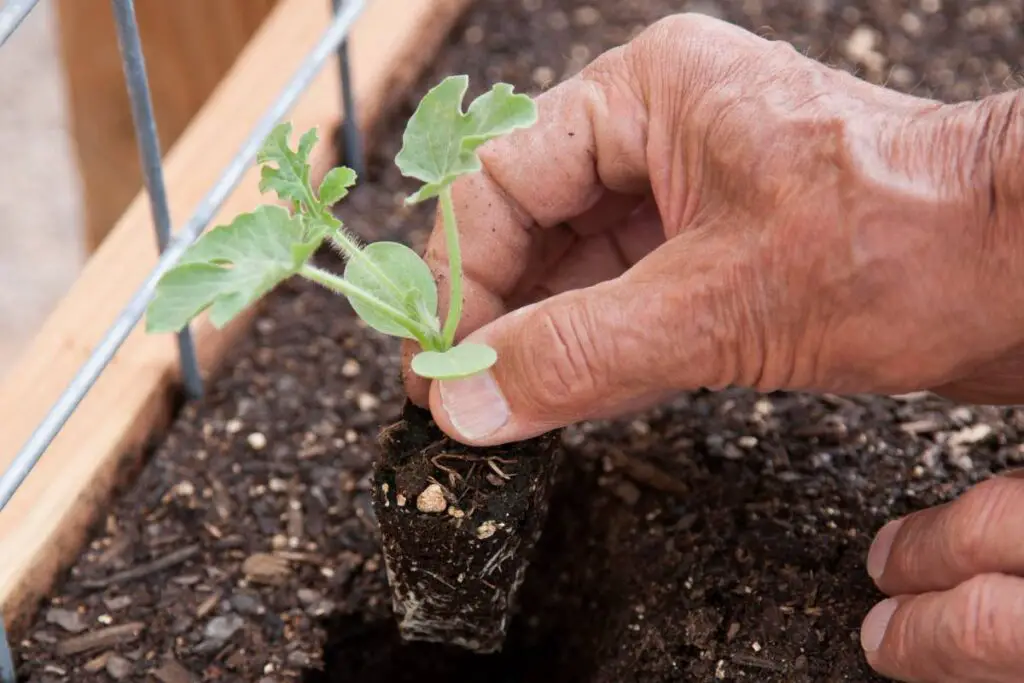
Why is it important to space watermelons in a raised bed?
Proper spacing is important for watermelons to get all the growing conditions in the ideal amount.
Let us understand the importance of spacing in detail.
1. To prevent overcrowding
Watermelons are large vines of fruits that need lots of space to spread their roots and stems.
If you space the plants closely, they will get overcrowded and compete for water, light, nutrients, and light.
Some plants will get the resources in plenty, and some will not get any.
A lack of ideal growing conditions will result in stunted growth, yellow foliage, and lowered fruit production.
Therefore, it’s essential to space the plants appropriately.
2. To allow proper air circulation
When melons are overcrowded, the air circulation between the plants drops.
Poor airflow causes the vines to take longer to dry the moisture after being watered.
The wet leaves will attract various pests and diseases to the plant, which can severely damage their health.
Hence, sufficient space between the plants will make easy air movement between the leaves preventing the risk of pests and diseases.
3. To prevent drying of raised bed
The raised bed will dry out quickly when too many plants strive to absorb moisture from the soil.
As a result, you must frequently water the watermelons to prevent them from dehydrating.
Hence, proper spacing between the plants is important to avoid such issues.
Looking for gardening supplies? We have tested 100's of products before recommending them to you guys. Check out our best pick below:
| Image | Gardening Supplies | Best Price? |
|---|---|---|
 Top
Top Top
Top | Raised Garden Bed Kit | Check On Amazon |
 | XLUX Soil Moisture Meter, Plant Water Monitor, Soil Hygrometer Sensor for Gardening, Farming, Indoor and Outdoor Plants, No Batteries Required | No Results |
 Top
Top Top
Top | 82 Pcs Garden Tools Set and Extra Succulent Tools Set | Check On Amazon |
 | Joeys Garden Expandable Garden Hose with 8 Function Hose Nozzle, Lightweight Anti-Kink Flexible Garden Hoses, Extra Strength Fabric with Double Latex Core, (50 FT, Black) | No Results |
 Top
Top Top
Top | Dual Chamber Compost Tumbler | Check On Amazon |
 Top
Top Top
Top | Sunnyglade Plant Stakes | Check On Amazon |
 Top
Top Top
Top | Organic Cold Pressed Neem Seed Oil | Check On Amazon |
 Top
Top Top
Top | Mighty Mint Gallon :-Insect and Pest Control Peppermint Oil | Check On Amazon |
 Top
Top Top
Top | Scotts DiseaseEx Lawn Fungicide | Check On Amazon |
 Top
Top Top
Top | Jacks Classic 20-20-20 All Purpose Fertilizer | Check On Amazon |
 Top
Top Top
Top | 30,000 Seeds Pollinator Attracting Wildflower Mixture | Check On Amazon |
 Top
Top Top
Top | Survival Vegetable Seeds Garden Kit-Over 16,000 Seeds | Check On Amazon |
Which watermelon variety grows best in a raised bed?
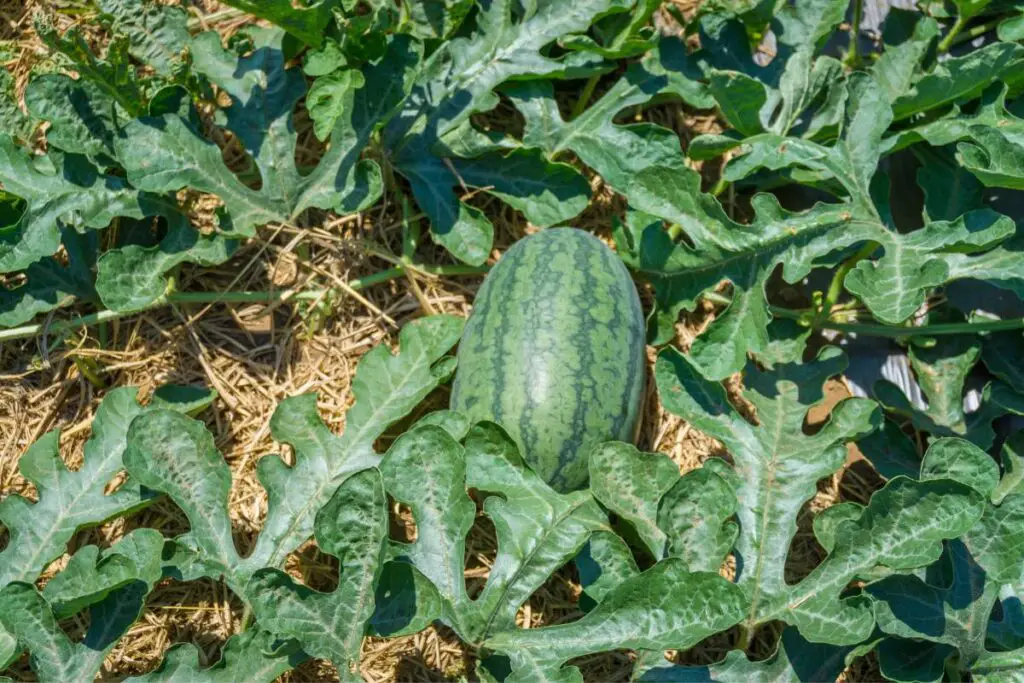
Growing watermelons in a raised bed are challenging since raised beds are small, and this vining plant needs plenty of space to spread out.
It’s beneficial if you select a small watermelon variety for growing in a raised bed, making it easier to trellises and grow them.
If you select a large variety, it can easily break from the vine and will put strains on a trellis.
To grow watermelons on a trellis, select a variety that produces 5 to 10 pounds of fruits.
In this way, the trellis can easily hold the weight of the fruit.
Blacktail Mountain, sugar baby, and mini yellow are the most popular watermelon for raised beds.
You can grow any variety in your raised bed or grow them all together to see which variety grows best in your region.
How do you space watermelons by their type in a raised bed?
The spacing between watermelons depends on the variety and the growing conditions of your raised garden bed.
The vine Watermelon varieties like the Royal majesty and the crimson sweet require a spacing of 4 to 6 feet apart.
The bush watermelon varieties, like the compact icebox, require 2 to 4 feet spacing.
Some other varieties of watermelons, like the cantaloupe and the honeydew, need less space than other full-sized watermelons, and their fruit size is also very small.
These varieties will grow if you space them 12 inches apart with 4 feet distance between the rows.
How does the planting method affect the spacing of watermelons?
There are two ways of growing watermelons in a raised bed garden: hills and rows.
Hills are the raised mound of soil about 3 feet across on which the watermelon plant will grow.
The general spacing for growing watermelons on raised hills is 4 to 6 feet apart.
However, space the hill 6 to 12 feet apart if you want to grow larger varieties.
But if you want to grow smaller varieties, space the hills 2 feet apart.
To grow watermelons in rows, space the plants 2 to 3 feet apart and the rows 6 feet apart.
This spacing will give the melons enough space as they grow.
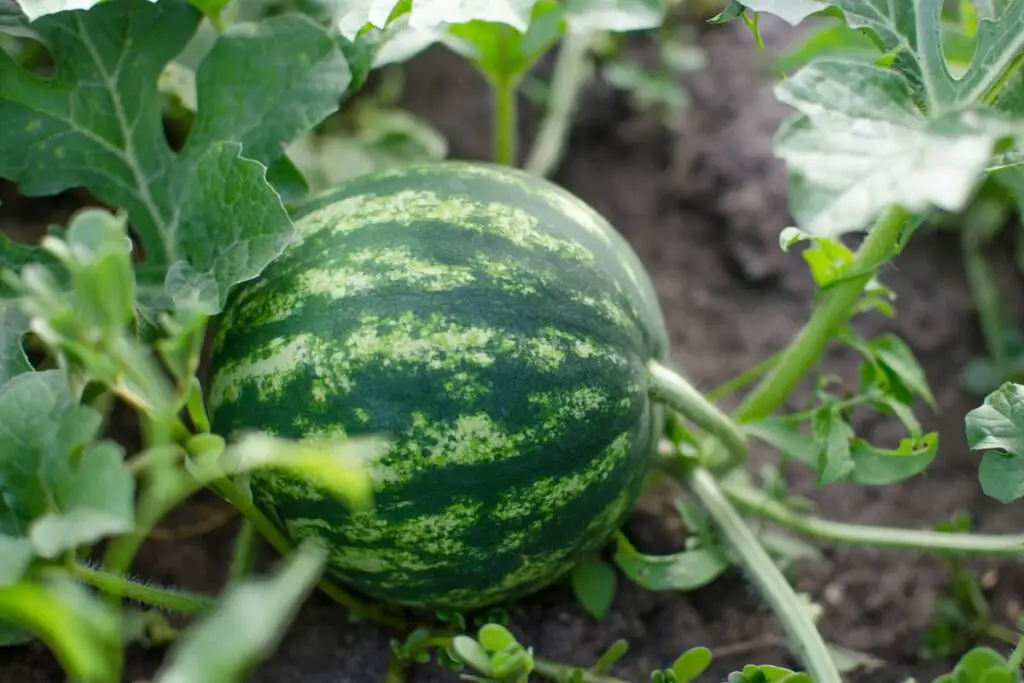
How do you space the melon seeds and transplants in a raised bed?
There are two options for planting melons.
You can either plant melons from seeds or transplants from seedlings.
The spacing for seeds will be slightly different from transplants.
If you grow watermelons from seeds, you will need to space them twice during their lifetime.
Firstly, when you plant the seeds for the first time in the raised bed, and secondly when it’s time for thinning after they begin growing.
However, if you start the seeds indoors and directly plant the seedling in the raised bed, you only need to do the final desired spacing since they are already established.
If you decide to start watermelons from seeds, plant 6 seeds in each hill and thin them to 2 plants after they sprout.
But if you plant seedlings, leave 2 to 6 feet between plants.
The final spacing also depends on the melon variety you opt to plant in your raised bed.
How to space watermelons if I grow them vertically?
Trellises help you to grow watermelons in a small raised bed.
Instead of growing them horizontally in the ground, you can use a trellis to grow them vertically.
The watermelon vines will reach 6 to 8 feet tall on a trellis.
So, you will need a trellis at least 8 feet tall to hold the watermelon vines of a full-sized plant.
The watermelon plants need 20 square feet of spacing per plant.
But if you want to trellis your watermelon, they will require a spacing of 10 square feet of space.
If you have a small raised bed, you can easily maximize your watermelon production by trellising them.
In a trellis arrangement, you can grow 3 watermelon vines in an 8×4-foot garden bed.
Start by planting melons at the base of the trellis. Varieties like the cantaloupe should get space 12 inches apart, and varieties like the honeydew should get spaced 24 inches apart.
You can use slings made up of mesh or fabric to give additional support to the melons.
You can harvest 60 to 10 pounds of watermelon in this little space during a season.
A raised bed will also keep your pets away from reaching the fruits.
What should be the ideal depth of raised bed for watermelons?
The watermelons grow best if your raised bed is at least 24-36 inches deep.
However, it isn’t necessary to have a raised bed that is this tall.
If you have a raised bed that is already built and there is no barrier between the raised bed bottom and the soil, the watermelon roots will dig inside the soil and grow as deep as required.
So this way, you can use a shallow raised bed to grow watermelons.
But if there is a barrier between the raised bed and the ground soil, you will need a raised bed 24-36 inches deep for planting your watermelon plants.
If you have placed a landscape cloth between the raised bed and soil, the raised bed depth should be at least 24 inches deep.
However, a depth is 36 inches is always better.
The watermelon roots usually grow in the top 12 inches of soil, but the additional soil will help the deeper taproot to grow and develop.
Deeper raised beds also help to prevent the saturated condition by ensuring additional drainage support to the plants.
What mistakes to avoid while growing watermelons in a raised bed?
We all love to eat sweet, juicy watermelons on hot summer days.
Growing watermelons is a cost-effective way to provide your family and friends with these sugary joyous fruits.
But if you didn’t succeed in growing melons, here are some reasons you can look for.
1. Preparing the soil bed incorrectly
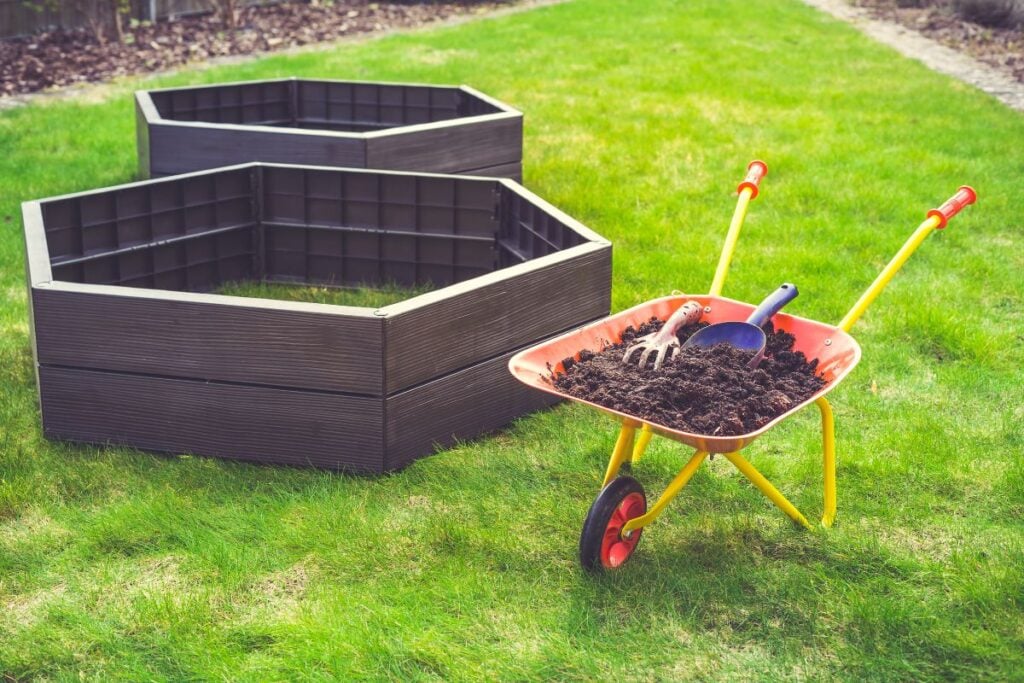
If you make mistakes in preparing the raised bed using soil composition, your watermelon plants will face growth problems.
Watermelons might suffer from poor germination, slow growth, or loss of plants.
Prepare the raised with loose, organically rich soil to prevent such issues.
Watermelons will do best in loamy, sandy, well-drained soil.
The pH level of the soil should be between 6.0 and 7.5.
Before planting the watermelons, add plenty of organic and compost to loosen the soil and provide sufficient nutrients to the plants.
2. Ignoring weed’s growth
The growth of weeds in the raised bed not only competes with the plants for growing space and nutrients but also attracts various pests and diseases in the garden.
If you find weeds in your raised bed, pull them apart.
The watermelons have a deep root system, so pulling the weeds will not cause problems like many other shallow-rooted plants.
You can mulch the soil to prevent weed growth; also, mulching helps in moisture retention.
Use can use grass clipping or straw mulches as these decompose within a year and provide valuable nutrients to the plants.
3. Incorrect spacing
We often space watermelons incorrectly in the raised bed garden, which becomes the cause of a poor harvest.
Overcrowding is one common mistake people make while planting seedlings.
The watermelon is a vining plant that needs a large amount of space to spread out.
They will be healthy and strong if they are properly spaced.
When they are incorrectly spaced, they become weak and will produce a lower yield.
Hence, proper space between the plants is necessary to grow them properly.
4. Improper watering
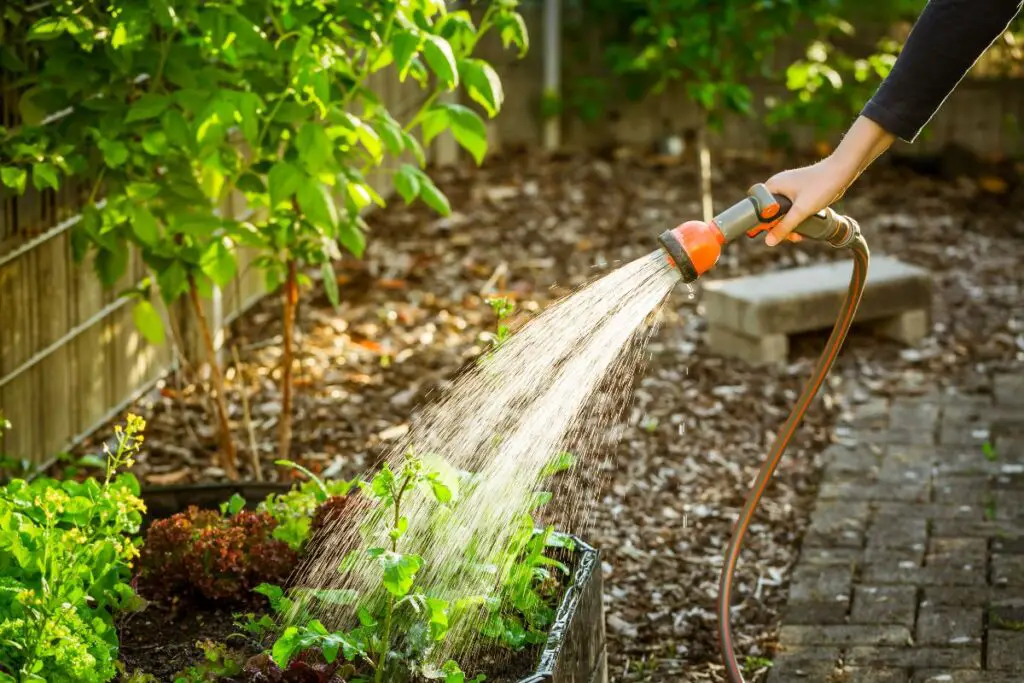
The watermelon plant thrives in soil that is consistently moist but not soggy.
This moisture level will keep the plant healthy and will not give enough time for pests and diseases to attack.
Consistent soil moisture will lead to a steady increase in fruit size.
The fruits usually crack when the temperature is very hot and dry.
Providing the melon plants with supplemental water will prevent the soil from drying.
The watermelon plants will need 1 to 2 inches of water every week.
Always water the plants at their base and avoid overhead watering and wetting the leaves.
Reduce the watering once the fruits start growing.
It is because the sweetest melons are a result of dry weather.
5. Neglecting pests and diseases
Regularly checking the melon plant leaves will help you address the signs of pests and diseases before they are widespread.
Watermelon is a sensitive plant and needs lots of attention.
One common sign of pest and disease Infestation is leaf damage.
The pests will not kill the plant but decrease the quality of melons.
The popular pests of watermelon are whiteflies, beetles, aphids, and thrips.
On the other hand, diseases like downy mildew, bacterial fungal blotch, and fusarium wilt are popular among watermelons.
You can treat the pests and diseases in your watermelon plants with chemical pesticides and fungicides.
Remove the infected fruits and leaves with sharp and sterilized pruners.
Avoid overwatering the plants, and ensure proper airflow around them.
6. Growing watermelons in a wrong growing season
Watermelons thrive best on hot summer days; some varieties take less than 100 days to produce fruits.
If you are from a place with a short growing season, consider starting the seeds at home and transplanting them later in the raised bed when the dangers of frost have passed.
You can use biodegradable pots for starting the seeds, as it will reduce the stress when transplanting the seedlings outside.
7. Harvesting at a wrong time
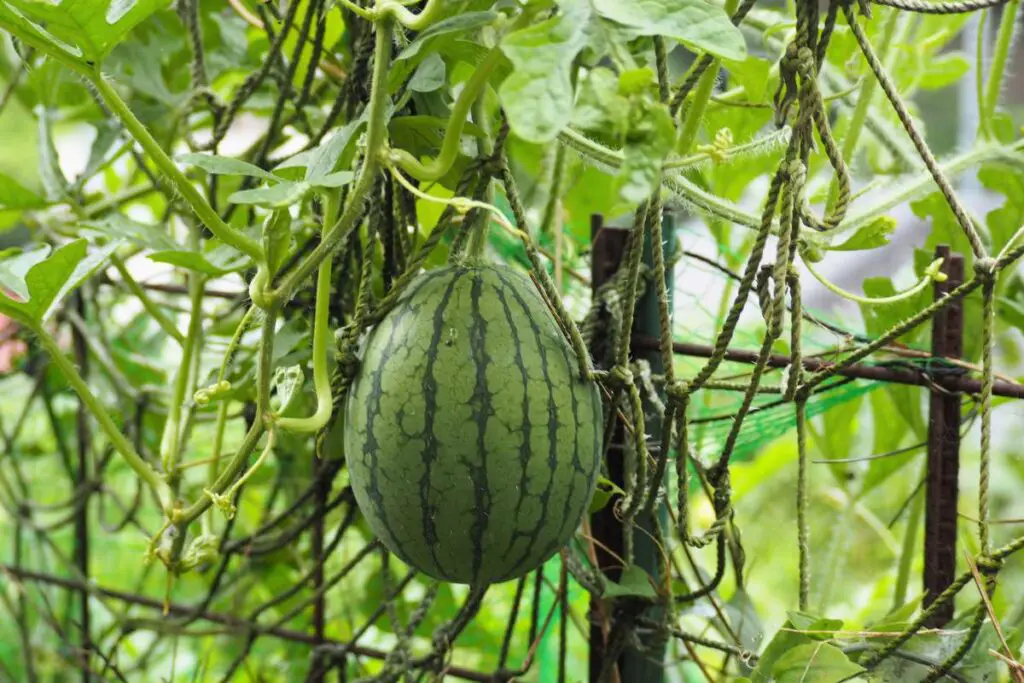
Knowing when and how to harvest the watermelon is important.
If we pick the melons too early, they will be small.
On the other hand, if we harvest the melons late, they will most likely develop a sunburn in the form of a white or yellow patch on their skin.
We should only pick the melons when they are ripened.
If their curly tendrils are brown, it’s the correct time to harvest them.
Reference: ScienceDirect, American Society of Agronomy, Noble Research Institute, Soil for Raised Beds, Raised Bed Gardening, Watermelon in the raised garden beds.
